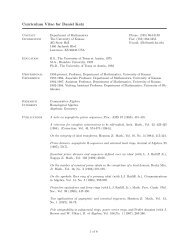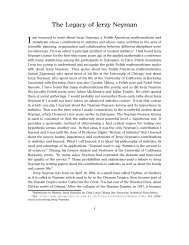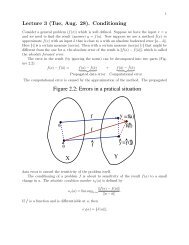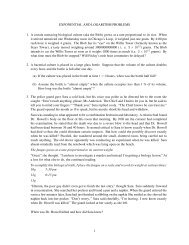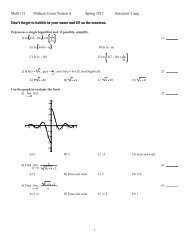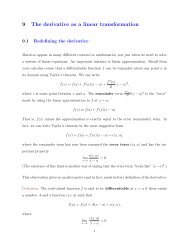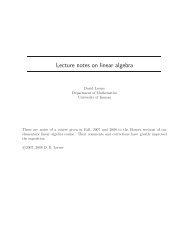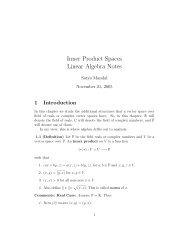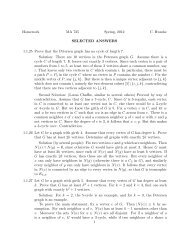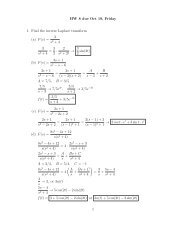Canonical Forms Linear Algebra Notes
Canonical Forms Linear Algebra Notes
Canonical Forms Linear Algebra Notes
You also want an ePaper? Increase the reach of your titles
YUMPU automatically turns print PDFs into web optimized ePapers that Google loves.
2. This non-zero element e ∈ V above is called a characterisitic<br />
vector of T associated to λ. A characterisitic vector is also<br />
known an eigen vector.<br />
3. Write<br />
N(λ) = {v ∈ V : T (v) = λv}.<br />
Then N(λ) is a subspace of V and is said to be the characterisitic<br />
space or eigen space of T associated to λ.<br />
2.2 (Lemma.) Let V be a vector space over a field F and T ∈<br />
L(V, V ) Then T is singular if and only if det(T ) = 0.<br />
Proof. (⇒): We have T (e1) = 0 for some e1 ∈ V with e1 = 0. We<br />
can extend e1 to a basis e1, e2, . . . , en of V. Let A be the matrix of<br />
T with respect to this basis. Since, T (e1) = 0, the first row of A is<br />
zero. Therefore,<br />
det(T ) = det(A) = 0.<br />
So, this implication is established.<br />
(⇐): Suppose det(T ) = 0. Let e1, e2, . . . , en be a basis of V and<br />
A be the matrix of T with respect to this basis. So<br />
det(T ) = det(A) = 0.<br />
Therefore, A is not invertible. Hence AX = 0 for some non-zero<br />
column<br />
⎛ ⎞<br />
X =<br />
⎜<br />
⎝<br />
c1<br />
c2<br />
. . .<br />
cn<br />
⎟<br />
⎠ .<br />
Write v = c1e1 + c2e2 + · · · + cnen. Since not all ci is zero, v = 0.<br />
Also,<br />
T (v) = ciT (ei)<br />
⎛ ⎞<br />
⎛ ⎞<br />
⎜<br />
= (T (e1), T (e2), . . . , T (en)) ⎜<br />
⎝<br />
So, T is singular.<br />
c1<br />
c2<br />
. . .<br />
cn<br />
⎟<br />
⎠ = (e1,<br />
⎜<br />
e2, . . . , en)A ⎜<br />
⎝<br />
The following are some equivalent conditions.<br />
2<br />
c1<br />
c2<br />
. . .<br />
cn<br />
⎟<br />
⎠ = 0..





